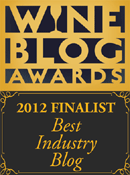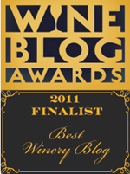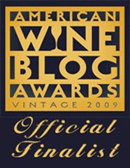March 2010 Archives
|
I'm calling in the real talent around here..our staff! | |
|
|
|
Since today is my birthday, (I'm turning 39...again!) it seems fitting to talk about aging wine. Like humans, all wines age differently. Some remain firm and youthful, holding up well to the rigors of time. Others ar For many, there's a great deal of mystery to the aging of wine. How do you do it? What conditions do you need? What are the secrets to knowing if a wine will taste better in 3, 5, 7, or even 10+ years? And, why is it that some wines can age gracefully (much like a fine piece of furniture becomes a beautiful antique) and others remind you of speckled carpet and flocked wallpapertwo rather awkward trends that did not stand the test of time. Before I go on, I have a confession. I've noticed that I'm slowly losing my taste for older wines. Whereas I used to love the intense, smoky, earthiness of a well aged Cabernet, today I find myself gravitating toward more plush, fruit forward, juicier reds, i.e., younger reds that are still bold and pronounced. I'm not sure if there is any correlation with my own slow aging, but I've definitely noticed a change in my preference. Could my taste buds be aging too? Is my palate going downhill?? These are the questions I ponder as I count the candles on my cake today. Back to the aging of wine You must begin with a well made and well balanced wine. Sometimes that is easier said than done, especially with so many oaky, high alcohol monsters out there. Make sure the wine has plenty of acidity too. There should be a subtle crispness to it, even for red wines. A teeny tiny bite at the rear of your mouth, just as you swallow is the general perception. The fruit components (cherries/currants for Cabernet, blackberries/plums for Zinfandel, etc.) should be in harmony with the tannins (the subtle drying sensation that occurs on the sides of your mouth) and overall alcohol content. If you get a burning feeling at the back of your throat, beware. You can bet the wine is quite alcoholic and might not be so well balanced. Or, if you find that any one component jumps out at you (Is the wine screaming with vanilla? That's a sure sign the wine has spent too much time in French oak barrels.) you might be in trouble if long term age ability is your goal. After balance, the next most important factor is temperature. Ideally, proper cellaring should occur at a constant 55 to 57 degrees. This is generally only possible with a built in cellar or wine storage unit, as few of us are willing to lower our thermostats to achieve this ideal temperature. The more common approach is to pick a cool place in your house (an unused closet, a basement or even an insulated garage) as long as it remains a constant temperature. Keep in mind that temperature fluctuations are worse than a slightly higher overall temperature. If you live in a moderate climate, you will generally be ok with a household cellar. Or, if you are lucky enough to have crawl space under your house as we do, consider storing your wines there. Other than dirt and the occasional mouse poop, this can be a great wine storage area! Lastly, there's light and sunshine. Just as with us humans, too much is not good. And while you can't slather your prized bottle with SPF 50, you can protect it from overexposure by keeping it in a dark protected place. Otherwise you risk increased oxidation which speeds up the aging process. Most of the time, I don't recommend aging white wines. The exception is Sauvignon Blanc. Due to its higher acidity, this aromatic white variety can be quite rewarding given a few extra years of aging. (My most memorable aged Sauvignon Blanc came from the 1937 vintage!) The abundant citrus and fresh grass aromas are replaced by what my father calls the Italian Deli phenomenon...i.e. Italian spices such as rosemary, basil, and thyme with green and black olives. A rich oily texture makes the wine quite sublime with certain dishes. The best plan with aging is to buy enough wine to get through the dumb spells. What I mean by this is buy at least a ½ to 1 case of something you believe to be age worthy so you can crack open a bottle every 6 months or so. Because like humans, wines go through dumb spells. This is when things are out of whack, and just don't seem right. While the wine isn't necessarily over the hill it is at an awkward stage of its life. (Anybody have a teenager that fits this description?!) Thankfully, with additional aging the rough spots even out and you are often rewarded with a superb well aged treat. And, if you bought enough to begin with, you'll know exactly when the wine is at its peak. Ironically, there seem to be some correlations between aging wines and the aging of humans. Both can improve with time. Both need tender loving care. And, both are happiest when shared at the dinner table with loved ones. Which is exactly what I plan to do to celebrate my birthday tonight. Here's to getting older!!! |
|
Tomorrow is St. Patrick's Day. While I'm not Irish, I've always enjoyed this particular holiday. There's no pressure to buy presents, no unnecessary decorating involved, and no expensive preparations required to celebrate Ireland's Patron Saint. And, as long as you wear a bit of green and appear to be cheery and festive, you are generally safe from the guilt ridden holiday stress that comes with so many of our American holidays. (Besides, it's an excuse to drink!) But from a wine pairing point of view, it can be rather confusing figuring out what goes best with corned beef and cabbage. First a disclaimer: I actually like corned beef and cabbage. While boiling isn't my fir But wine selection can be awkward. Corned beef is salty and often rather fatty, while the boiled veggies are well, boiled veggies. In other words, they're bland. Choosing a typical red wine with moderate tannins and a good acid structure, like Pinot Noir or Cabernet, is not my first choice. All that salt and acid is way too much. Instead, think opposites, because in this case they really do attract. In other words, what is opposite a salty piece of meat? Something with a hint of sweetness such as an off dry white wine like Riesling or Chenin Blanc. Or, you could go with a Sauvignon Blanc as long as it isn't too aggressive and herbaceous. Think sweet lemons, figs, peaches and floral elements instead of the grassier herbal spectrum. A lovely Rosé would also be very nice. If you're stuck on red wine with meat, try a fruity spicier variety like Zinfandel or Grenache. I would definitely avoid wines with high acid, high alcohol, and big tannins. In other words, no Napa Cabs! This is your opportunity to experiment, so try something different. Maybe a sparkling Rosé from the Loire Valley? Or, an Alsatian bottling your Great Aunt Gertrude gave you? Of course, if you're a Dry Creek Vineyard fan, our Dry Chenin Blanc, Petite Zin (Rosé of Zinfandel) or Taylor's Vineyard Sauvignon Musqué would do the trick. If you really want to get in the mood, throw a tiny bit of green food coloring into your glass. Unconventional yes, but a fun way to add a touch O' Irish. (I do this with my kid's milk...why not wine?) If all else fails, there's always a pint of Guinness. This nutty brown ale is the most traditional beverage of choice which, come to think of it, is probably what those leprechauns prefer to drink anyway! |
| ||||||||
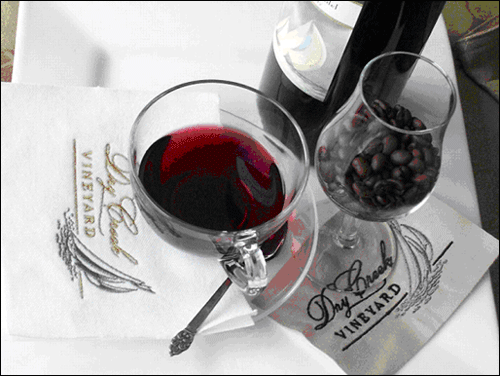 | ||||||||
Oh, how true, how true!! A faithful reader, Jim from Ohio, sent this to me, compliments of his friends at Dorothy Lane Market. It's the perfect segue for today's post because . I am drowning. When I say drowning I mean swamped, swimming, sinking. And, no amount of coffee can give me enough hours in a day to get it all done. I'm like a duck above water, I look cool and composed but down below I'm paddling like hell just to keep my head above the surface. I'm not talking about wine sales. Or, even profits--although improvements could be made in both areas. I'm talking about trying to keep up with the way business is conducted today. Our round the clock, 24/7, electronically connected world has made it impossible for people to catch up, no matter how many hours you throw into the work week. Frankly, it's not the actual work during the work week that is the problem. It's the sheer VOLUME of correspondence that accumulates from emails, phone tag, meetings, and follow up meeting to those original meetings--in both work AND personal life-- that creates all the havoc. (Heck, even my mother emails me now.) To top it off, everywhere I look and everything I read indicates that today's savvy business leaders need to fully embrace all forms of social media, especially Facebook and Twitter as these are vital to connecting with future customers. You have got to be kidding. Does anyone else out there besides me wonder how this is humanly possible? Clearly, I'm a twirp (an old fashioned term that seems fitting for us twitter resisters!) and if I hear it one more time, I think I'll scream. Or discombobulate, which I've been accused of doing a lot lately, if you ask my kids. Don't get me wrong. I completely agree with the idea of connecting with customers through the use of the internet. It's fast, it's cheap, and for small family companies like ours, it's a great way to communicate with a wide group of people. That is why I started this blog. But I'm not sure it's possible to add Facebook, Twitter, and Lord knows what next to an already full in-box when one wears a hundred different hatsand who doesn't these days?! And, apparently to do it right it needs to be personal and authentic. At least that's the message I got from a seminar I attended last week. Put on by the Luxury Marketing Council (yes, I too, saw the irony in their name which is probably why for $50 bucks I decided to make the trek to Napa to pick up some pointers!), this gathering focused on how to grow our tasting room business and attract more visitors to the winery. Or, as one panelist stated: how to separate the wealthy from their wealth. The panel was impressive. And, on most of their recommendations, I'd give us high marks. Authentic? Check. Personalized? Check. Service oriented? Check. But, is the owner on Facebook? No and that's where I'm clearly falling short. Luckily, I can delegate this function, which is exactly what I've done to my 30 something marketing assistant. But the pressure is all around me, as is the feeling that I'm NOT KEEPING UP. While I picked up some good tips, I left the seminar still not sure I want to add Facebook Diva or Twitter Tramp to my list of winery titles. Sure it can help spread the word to a new audience. And, it seems to be growing like wild fire. But isn't there a bit of irony to the whole Facebook thing? While everyone agrees that being authentic is important, wineries using Facebook in their marketing are working awfully hard to make sure it doesn't actually LOOK like marketing. And to me, that's not being very authentic. |
welcome!
This is a blog about what it's really like to be in the wine industry...so sit back, take a sip and enjoy!

about me

our wines

our winery

our events

contact me

privacy statement

favorite posts
A Lifetime in Wine
Top 10 Traits of the Successful Family Winery
The Dreaded Family Meeting
Board Meeting Jitters
Is the Future of the Winery in Danger?
The Case of the Overweight Bottle
Wine and Dementia
Wanted: Talented (Normal) Individual for Family Owned Winery
A Sea of Wine
The Heroes of Our Industry
monthly archives
subscribe
Hopes & Dreams
Owning a Coastal Cottage
Sailing for 6 Months
Getting a 100 Point Score

Favorite Haunts
Coast of Maine
Dry Creek General Store
Dry Creek Kitchen
Healdsburg Bar & Grill
Spoonbar
Sonoma Country Antiques
Baci Cafe & Wine Bar
The Farmhouse
Istanbul's Grand Bazaar
Bad Ass Coffee
Bistro Ralph

Bits of Press
Food & Wine Magazine
The Wine News
Wine Enthusiast
Wine Spectator
Press Democrat
Sunset Magazine
Connoisseurs' Guide
Dan Berger's Vintage Experiences
Cruising World Magazine
Oprah Magazine
The Washington Post
Coastal Living Magazine
Wine & Spirits Magazine
People Magazine
SAG Awards Magazine
Forbes Magazine

Favorite Magazines
Coastal Living
Down East
Sunset
Country Living
Quarterly Review of Wines
Wines & Vines
Wine Spectator
Wine Enthusiast
California Grapevine
Connoisseurs' Guide
Practical Winery & Vineyard
WineReviewOnline
Vineyard & Winery Mgmt

Blog Buddy List
Fermentation
Hip Tastes
Pinot Blogger
All The Best
Julia Flynn Siler
Vinography
Winery Web Site Report
The Pour - Eric Asimov
Dr Vino
Steve Heimoff
Start Up Ladies
Good Wine Under $20
Blind Muscat
The Wineroad Blog
Gabe's View
Wine Peeps
Vici Vino
Cellarmistress' Cellar Talk
Uncork Life
WineVine-Imports Blog
The Wine Witch
SOURMASHED

Honorable Mentions
Fermentation
Wilma Hits The World of Blogs
Most Intriguing New Wine Blogs of 2008
Midwest Wine Guy
Winery of the Month
Julia Flynn Siler
Meritage wines - and a fascinating glimpse into family business
Winery Web Site Report
New Winery Blog: Wilma's Wine World
Start Up Ladies
Insider's View of Family Owned Dry Creek Vineyard
The Glue that Keeps the Whole Thing Going
Atlanta Dish
Blog of the Week
Blind Muscat
The Merits of Meritage
Wineries.net
Boston Wine Expo exhibitors, and the reason why winemakers are so darn happy

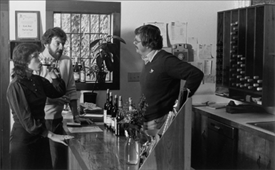
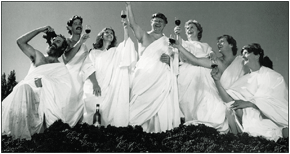
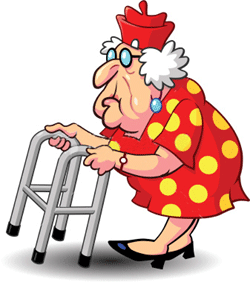 en't so lucky, showing their age much more dramatically with thinning fruit, insipid flavors, and lackluster appeal. A highly subjective topic, this is one of the most frequently asked questions I receive. And while I don't profess to be an expert on the subject, I certainly have my opinions as well as likes and dislikes on the matter.
en't so lucky, showing their age much more dramatically with thinning fruit, insipid flavors, and lackluster appeal. A highly subjective topic, this is one of the most frequently asked questions I receive. And while I don't profess to be an expert on the subject, I certainly have my opinions as well as likes and dislikes on the matter. 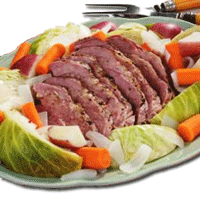 st choice for meal prep, the fact that I can throw a bunch of ingredients into a deep pot of boiling water and end up with a simple but filling meal is appealing. And, who isn't happy with only one pot to clean up afterward?
st choice for meal prep, the fact that I can throw a bunch of ingredients into a deep pot of boiling water and end up with a simple but filling meal is appealing. And, who isn't happy with only one pot to clean up afterward? 